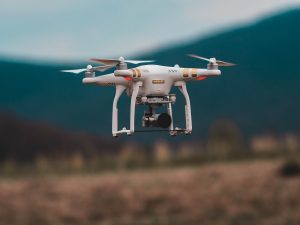Table of Contents
INTRODUCTION
The unmanned aerial vehicles (UAV) or unmanned aircraft systems (UAS) called drone is a flying robot that can either be remotely controlled or independently flown through a designated operating system along with onboard sensors.
Speaking of drones, the weight it can accommodate is called ‘payloads’. The drone can carry materials while it flies, ranging from a little box of delivery and a camera. Today’s drones, however, are designed with motors that are strong which enables them to fly with weights. The capacity to carry weight can be limited. Especially in the cases of micro drones. But still, some drones can lift heavyweight.
Imagine if you were asked how fast a vehicle can go. You probably would ask for that type of vehicle Right? Is it a car? a bus? or what? This is because the type of vehicle will enable you to know what answer to give. The same thing applies to how much weight a drone can carry.
To know exactly how much a drone can carry, we should take a look at the types, factors, and designs.
Single rotor Drones
In terms of designs and structures, the single rotor drones are similar to a real helicopter. This type of drone is designed with a rotor that is big in size and a rotor small in size. The small one is placed on the back of the drone to control its diving. This type is really efficient. Gas engines can power them and they fly very high. It has reduced spinning because of the less number of rotors and this reduces the amount of energy usage. It carries a heavy payload. you sure would enjoy it with your photography skills.
Multirotor Drones
The most popular type of Drone is a multi-rotor. It’s employed by professionals. It is used for works like photography and surveys and many more. It is designed with more than 2 rotors. This type is cost-friendly. With 2 rotors, its payload ability is about 78 pounds. If it comes with 4 rotors, then you can expect it to lift about 100 pounds. If then it’s designed with 8 rotors it’ll accommodate a weight of 200 pounds.
Fixed Wing Drones
This type of drone is different totally in terms of designs and the way it was made. It makes use of a material that looks like a wing similar to that of a plane. It can remain still in the air. As it battles with the gravity it only moves ahead as controlled. Its duration of flying is quite impressive.
It can also accommodate a camera for surveillance or aerial mapping.
The hybrid VTOL
This type is the combination of both the work of fixed-wing and the rotor based type. This design has been improved and now performs better than before. It can operate in just about any location. Additionally, it has impressive speed and distant coverage. It can put to use in areas in farming. It’s able to collate data, especially for large farms. A camera can be installed on the drone to help point out places that require amendments. It also helps in terms of infrastructure.
The power of the motor
Other factors are also significant and should be put into consideration. A lot of things affect the capacity of the drone in carrying loads. One is the power of the motor.
The power of the motor determines how much weight the drone will accommodate. A powerful and well-built motor will be able to carry a reasonable amount of payloads conveniently as it flies through its path and reaches the destination without delay and difficulty.
Propeller
Propellers are really a very important factor. Both the numbers and size of propellers are a determinant of how much the drone will be able to carry. Drones with 4 propellers tend to carry heavy payloads.
Battery
As the power used by the drone to function is derived from the battery, the battery is one of the important things to put into consideration. Drones with large battery capacity can carry a big amount of payloads, without fear of it not reaching its destination or not working efficiently.
Environment and weight of the drone
The next thing which is also imperative is the environment. Environment affects a drone in terms of payload capacity. The weight of drones is also not excluded. Drones that are lightweight will not be able to carry much payload while a heavyweight drone will accommodate heavy payload.
Taking a look at consumer drones in general. It has been designed for the best interest of the people. To easily fly it and employ it for different activities. These drones usually with a camera and probably an extra battery. As the case may be, it’s still able to carry extra weight. A consumer drone can carry about 180 to 300 grams. Though the payload might reduce the time of flight.
The type of drone is a determinant of how much weight the drone can carry. According to its purpose, each drone has been designed to carry a different weight or payload. A carrying drone would lift about 21 kg to 219 kg. On the other hand, the average weight a drone can lift ranges from about 0.3 kg to 2.1 kg.
CONCLUSION
As the drones’ payload capacity is determined by types, designs, and factors. Payloads range from 21 to 219 kg, or 0.3 to 2.1 kg. Drones can make deliveries and can be used to film and survey. Its efficiency is not below expectations once you have the right type for the right job.

